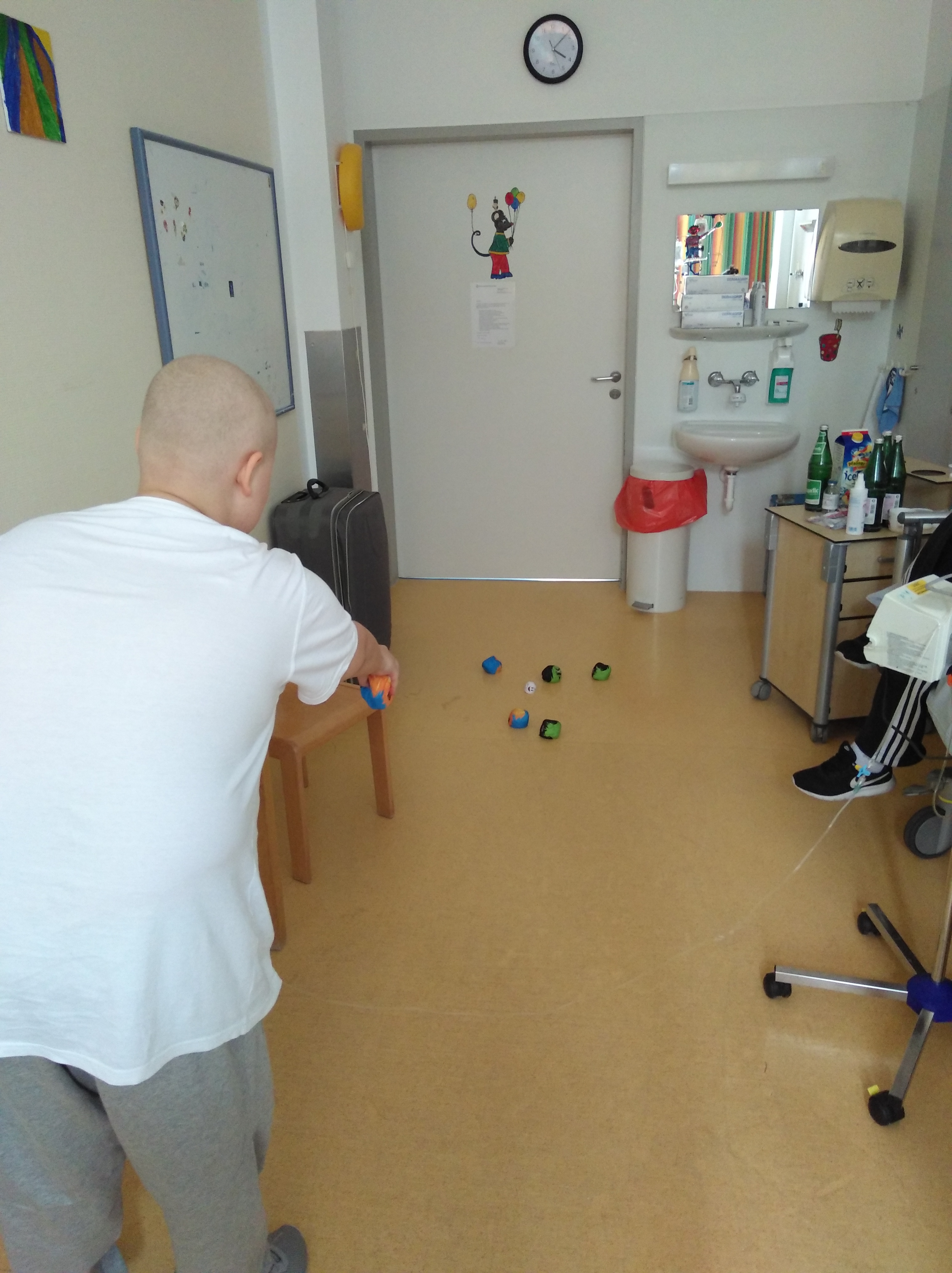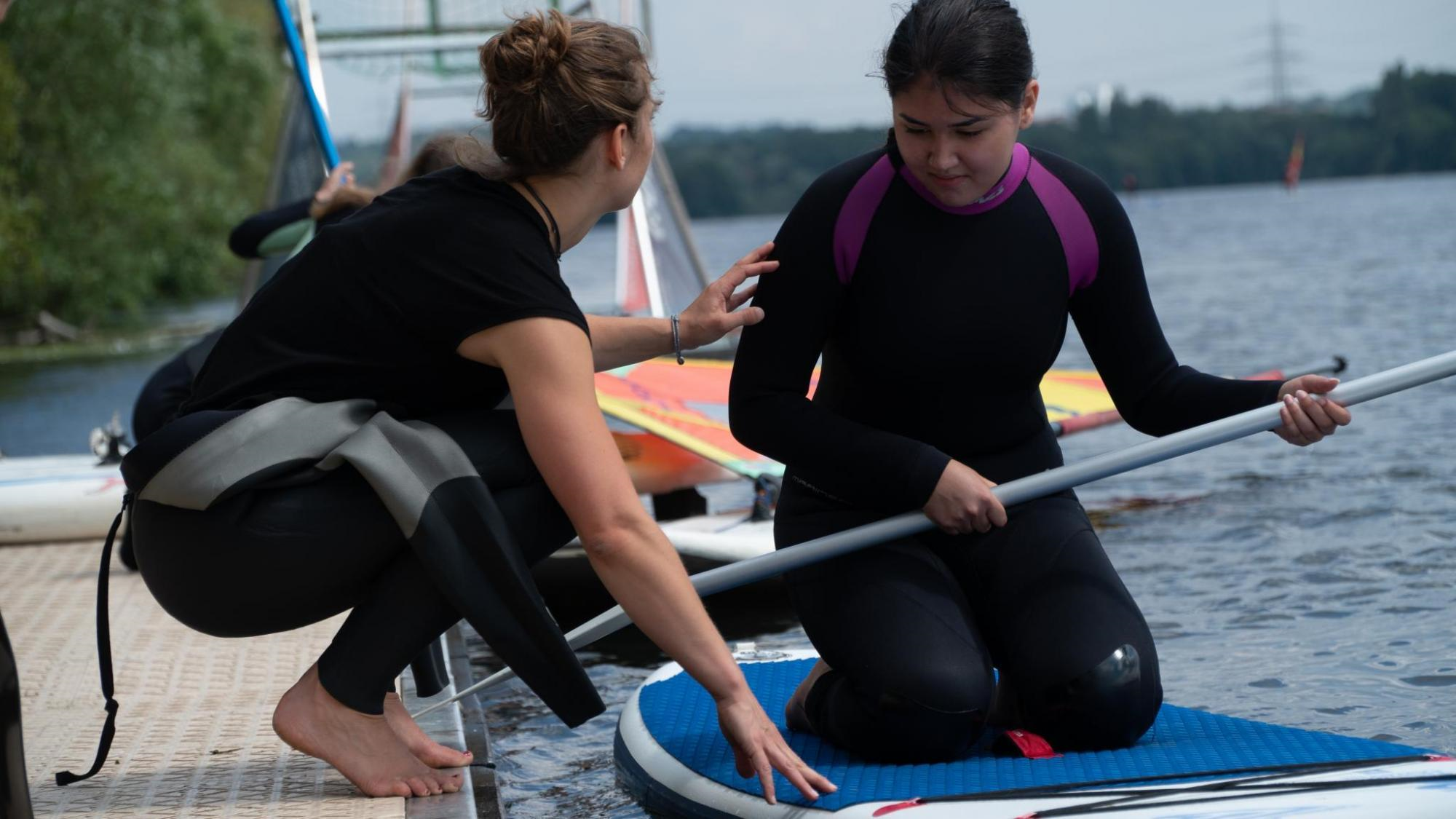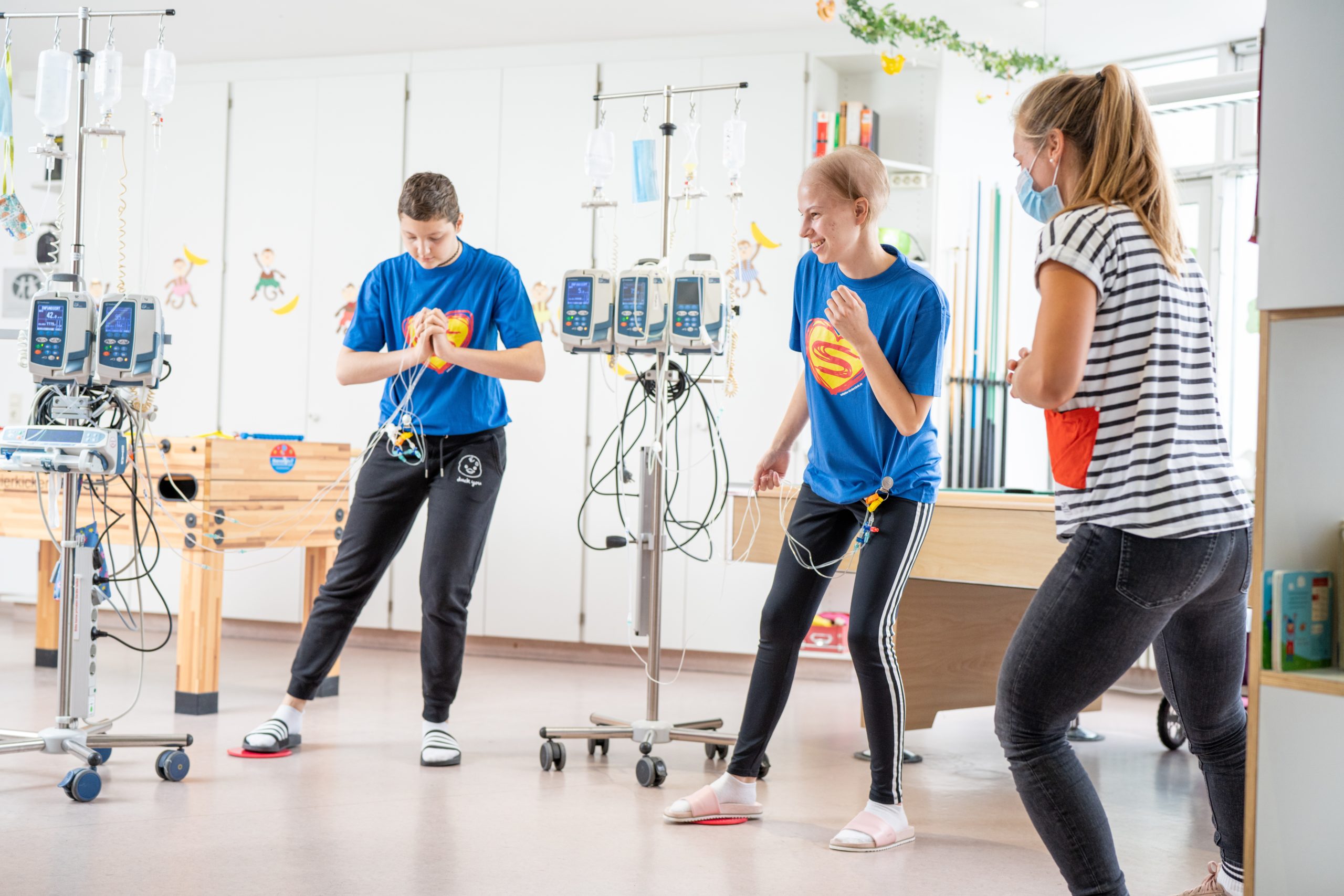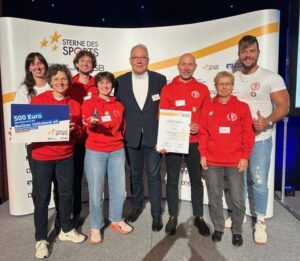Practitioners / Therapists
Scientific Background
Scientific studies that have recorded physical activity and sports using subjective and objective data collection methods show that cancer therapy in childhood and adolescence is associated with drastic restrictions in physical activity and that the majority of hospitalized children spend 23 hours or more in bed per day (Winter et al. 2009; Götte et al. 2014). Therefore, a primary goal of exercise therapy is to motivate patients to get up and break the inactivity, since even a small amount of physical activity means a significant increase in movement and has a positive impact on the cardiovascular system. However, structured exercise promotion is not a component of basic care for pediatric oncology patients, even though exercise is considered an integral part of motor, physical, and social development, and its health importance for children and adolescents is undisputed.
Positive effects of physical activity on fitness and psychological well-being have already been scientifically proven in adult oncology, and initial results also indicate positive effects in pediatric cancer patients, which have been summarized in several current reviews. Based on the existing scientific knowledge, in combination with generally valid children's rights to adequate exercise promotion (right to sports pedagogical support – written in the school law; right to play and age-appropriate active recreation – written in the UN Convention on the Rights of the Child 2012, Article 31), young oncological patients should be given access to exercise and sports during the different therapy phases and in aftercare. This particularly includes integration into school and club sports. The European Standards for the Treatment of Children with Cancer of SIOP Europe also recommends: 'Exercise and sporting activities are important for patients in the hospital from the first day of treatment' (Warsaw 2009, page 9).
The desire for athletic reintegration and more services in care is not only expressed in various guidelines, but also arises directly from the affected children, young people, and families. This has been shown by our scientific studies and particularly includes professional individualized exercise guidance by trained staff.




Neues vom NAOK-Standort Berlin
Silberner Stern des Sports für das Spendenprojekt „Dein Sprung für die Krebsforschung“

Neue Stellenausschreibung Sportwissenschaftler/-in (w/m/d)
am NAOK Standort Aachen

